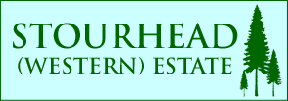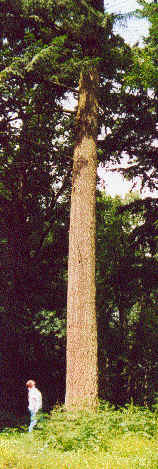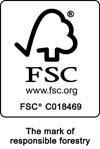

 Home
Products
Timber Info
Activities
Lettings
About
Contact
Home
Products
Timber Info
Activities
Lettings
About
Contact

Forest Management
Background
 Natural Regeneration
Natural Regeneration
For more than two centuries the Hoare family have managed the woodlands of the Stourhead Estate with the joint aims of producing quality timber and creating and maintaining a beautiful landscape. The estate has always been at the forefront of forestry thinking. Over two thirds of the current 496 hectares of woodland were open ground two hundred years ago, and the estate was one of the first to plant widely with the conifer species such as Douglas fir which thrive on the site. However the landscape, as a backdrop to the famous Stourhead landscape gardens, dictated the style of the planting, with a patchwork of small areas of different ages and species. This was taken further in the 1950ís and 1960ís by increasing the diversity of species, and aiming towards replacing trees by the natural setting of seed rather than by planting.
 Mature Douglas Fir
Mature Douglas Fir
The Forest Today
Currently the Stourhead (Western) Estate produces about 3000 cubic metres of conifer timber a year, and 600 of broadleaved. We primarily operate a system of Continuous Cover forestry, where individual trees or small groups are selectively felled, and the majority of restocking is by natural regeneration. This forestry system concentrates on achieving the best quality timber, but in a sustainable and environmentally friendly manner. The woods are certified under the Forest Stewardship Council® scheme (ref. SA-FM/COC-004552/G076) as being run to the highest environmental and social standards. The forest is managed by David Pengelly of Canopy Land Use, experts in Continuous Cover management. For more details on this style of management, see the Continuous Cover Forestry Group (CCFG) website.

Our woods are seen as examplars for this sympathetic form of management, and are visited by many groups such as the CCFG, the Wessex Silvicultural Group and the Royal Forestry Society.
We offer a free guided walk to groups of 6 to 20, explaining how we manage the woodland and the benefits of active forest management. We can tailor the visit to suit the party, both in terms of the terrain covered and the technical level of the content.
In 2001 we completed a 20 year Forest Plan for the woodlands, in consultation with the Forestry Commission, English Nature, county Wildlife Trusts and other interested parties. This outlined the further conversion to irregular forestry and the enhancement of important wildlife and landscape areas that we intend. We reviewed the plan thoroughly in 2011. In general, we did not feel the need to make major changes. One change forced on us was to reduce the emphasis on keeping a strong component of larch within the conifer areas, as larch is now threatened by the serious disease Phytopthera ramorum.
Our conifer species include Douglas fir, spruce, larch, western red cedar and western hemlock. When "respacing" (cutting down naturally regenerated saplings we do not need) we favour Douglas fir and cedar, then spruce, while actively trying to eliminate western hemlock. Our broadleaves are particularly oak and ash, with beech, sweet chestnut and sycamore also. Alder is coppiced in the wetter areas. Careful control of growing conditions and widespread pruning are used to ensure quality. Although most of the timber is sold as roundwood to sawmills in the region, we process a significant amount of timber ourselves for sale direct to end users.